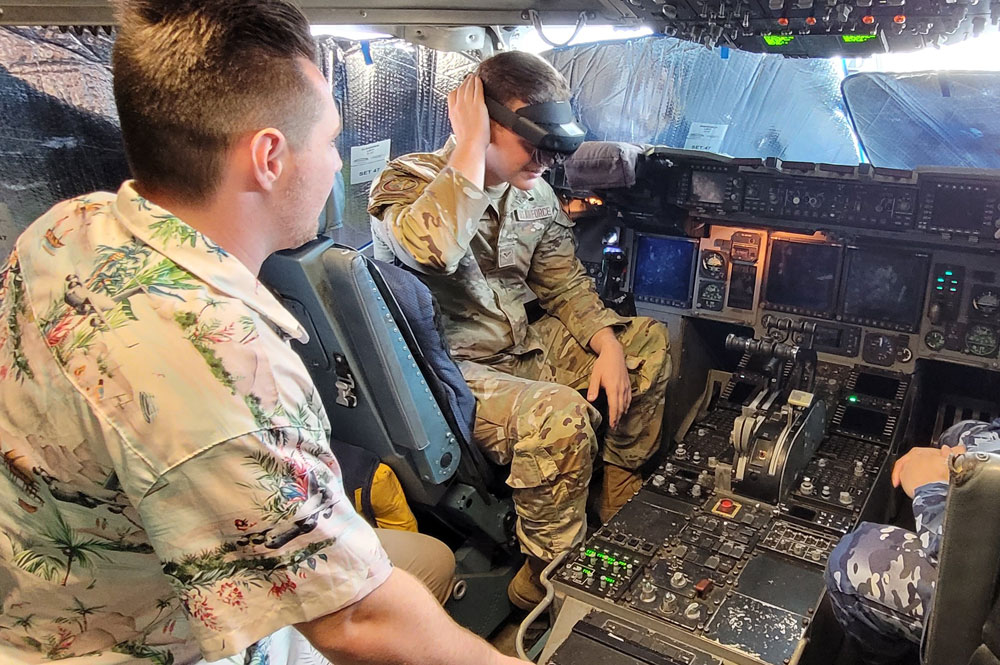Boeing Field Tests Virtual Technology to Rapidly Repair USAF C 17
 Boeing Australia FSR Luc de Leacy (left) and USAF Airman First Class Anthony Cardoni on the flight deck of a USAF C-17 during a field test of Boeing’s ATOM technology (Boeing photo).
Boeing Australia FSR Luc de Leacy (left) and USAF Airman First Class Anthony Cardoni on the flight deck of a USAF C-17 during a field test of Boeing’s ATOM technology (Boeing photo).
AMBERLEY, QUEENSLAND – Boeing has conducted the first field test of its augmented reality maintenance technology to support the rapid repair of deployed aircraft.
The test of Boeing's interactive Augmented Training Operations Maintenance (ATOM) technology was conducted as part of the U.S. Air Force (USAF) Air Mobility Command’s 'Mobility Guardian 2023' exercise in July.
“Ordinarily, when a C-17 is away from a main operating base, operators don't have access to Boeing specialist maintenance crews, grounding the aircraft for days longer than required," said Lisa Sheridan, Boeing Defence Australia's (BDA’s) C-17 International Field Services and Training Systems program manager.
“By collaborating with USAF and Royal Australian Air Force crews to replicate a blended, integrated maintenance workforce, we successfully demonstrated that ATOM can improve mission readiness and help transform customer deployments to contested zones.”
During the exercise, a USAF maintainer was required to obtain virtual support to troubleshoot a C-17 Globemaster III thrust reverser fault in a simulated semi-contested environment.
Using Microsoft HoloLens augmented reality headsets, a Boeing Australia Field Service Representative (FSR) at RAAF Base Amberley, Queensland shared repair manuals and conducted engine diagnostics virtually with the USAF maintainer in Townsville, 1400 kilometers north.
The artifacts appeared as holograms that both users navigated using voice commands and hand gestures, enabling the Boeing FSR to troubleshoot the fault with the USAF maintainer in real time, as if they were together.
"ATOM can operate in areas of limited or poor network coverage and could significantly reduce aircraft downtime by quickly and easily connecting operators with Boeing experts anywhere in the world, who can safely guide them through complex maintenance tasks,” Sheridan said.
USAF Airman First Class Anthony Cardoni, who participated in the trial, said: “HoloLens was a great experience utilising new technology and offered a new perspective on aircraft maintenance. It allowed me to complete a task that I have never done before while talking to a Boeing engineer miles away like they were showing me over the shoulder.”
In addition to the ATOM trial, Boeing C-17 FSRs and engineers from the US and Australia were deployed to provide maintenance support to USAF and RAAF crews in Cairns and Townsville. It was the first time Boeing Australia engineers had supported an international C-17 customer on a military exercise.
Media Contact:
Karinne Cilento
Boeing Australia Holdings
Mobile: + 61 410 634 326
karinne.n.cilento@boeing.com